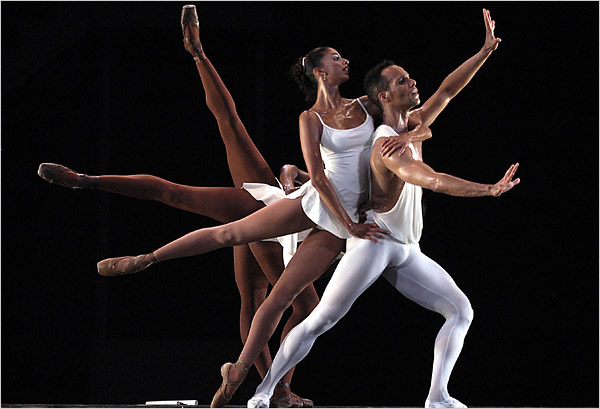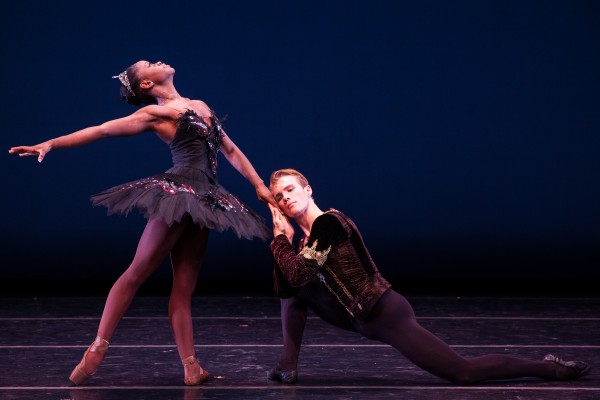
Dance Theatre of Harlem played before large crowd at Akron Civic Theatre
The Dance Theatre of Harlem has relaunched itself, and a stellar orbit is in the making. Begun 44 years ago through the efforts of Arthur Mitchell, principal dancer for New York City Ballet, and Karel Shook, with the idea of invigorating the Harlem neighborhood with the best of classical dance, the new organization is reaching out.
An Akron-based group, Youth Excellence Performing Arts Workshop (YEPAW), a Knight Arts grantee, shares a similar history, both in its origins and in its aims. The two came together on February 11 when YEPAW presented Dance Theatre of Harlem to a large audience at the Akron Civic Theatre, another Knight Arts grantee.
Dance Theatre of Harlem performed a long program – with two intermissions, after each of which a few audience members, with young children, unfortunately had to leave. Those who stayed through were treated to the eclectic and demanding repertoire that the 18 dancers who comprise the company are noted for. From George Balanchine’s “Agon” (which harkens to the company’s origins in the New York City Ballet), through a classical pas de deux (the Black Swan duet from “Swan Lake”), to more contemporary pieces like John Alleyne’s 2012 work “Far But Close,” and resident choreographer Robert Garland’s 1999 work “Return,” the dancers demonstrated their control over classical ballet technique while building momentum for a rousing finish in works that combine the classical moves with hipper music and urban dance technique.
None of the dancing was lost on audience members. Balanchine’s “Agon” has nothing to do with its mythic title, but has lots to do with simple costumes (white tops and black tights designed to show bodies in motion) and amazingly difficult dance positions, changes of direction, and balance that especially works the female dancers. Dance Theatre of Harlem exhibited great control over the requirements of this dance maker.
Audience members cheered and applauded for this piece as loudly as they did for the upbeat and funky last work, “Return,” in which the musical inspiration came from songs by both James Brown (“Mother Popcorn,” “Superbad,” and “I Got the Feeling'”) and Aretha Franklin (“Baby, Baby, Baby” and “Call Me”).
Choreographer Garland was certainly correct in his assertion in the notes that this work fused urban physicality and classical neo-modern ballet technique. In the “Superbad” section, a male dancer did the iconic James Brown rapid foot shuffle to the delight of viewers. Franklin’s “Call Me” took on ironic humor, as the ballerina stretched from male dancer to male dancer to male dancer as the famed singer belted out “I love you, and I love you, and I love you too.” Music and dance made a double whammy.
Alleyne’s “Far But Close” combined spoken word and dance, a combination that frequently does not work, but did in the company’s take on the dramatic dialogue between a man and a woman on a subway platform as he begins to make smooth advances. She counters, and they connect. Dance is a wonderful dramatic medium to show inner emotional conflicts and changes of feeling.
Black Swan pas de deux, Dance Theatre of Harlem. Photo from www.marinaharss.com
The Black Swan pas de deux is a well-known and frequently done work, although the change here is that the version Detroit Theatre of Harlem uses comes from their coach and teacher Anna-Marie Holmes, who learned the role from Kirov Ballet dancer Natalia Dudinskaya. Not only is that a significant link in the history of dance, but the interpretation is gutsier and looser than the tightness and stillness that you often see in presentations. The dancers got to show off their bravura sections, even if there were some wobbles on the extended pirouettes that night.
Recent Content
-
Artsarticle ·
-
Artsarticle ·
-
Artsarticle ·

